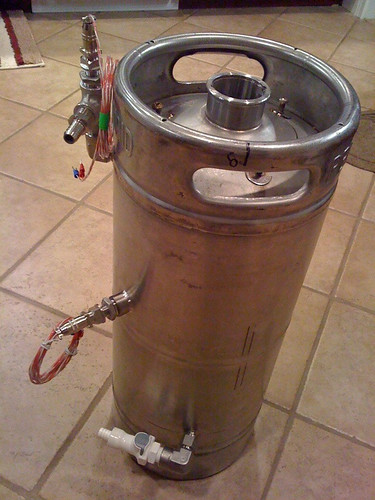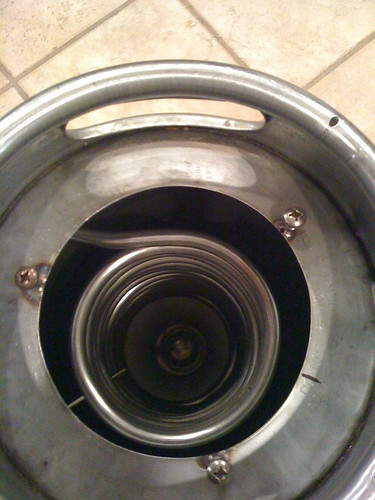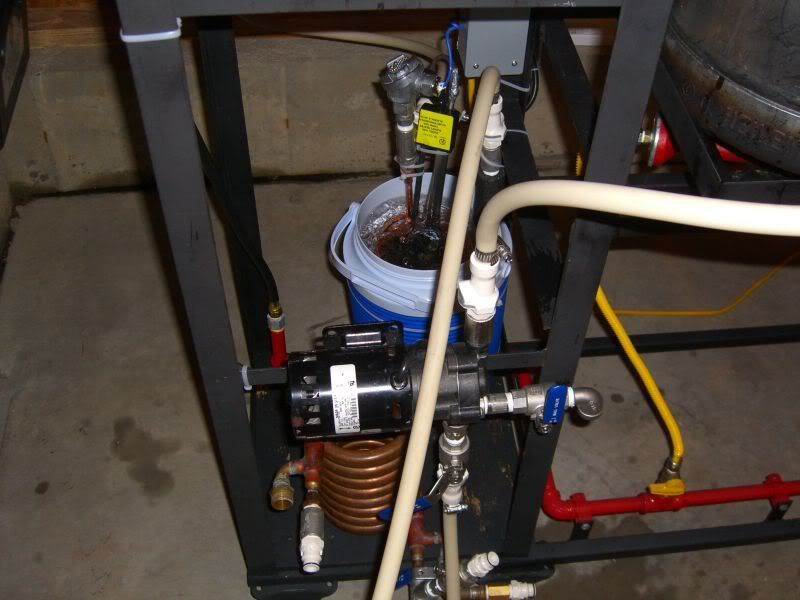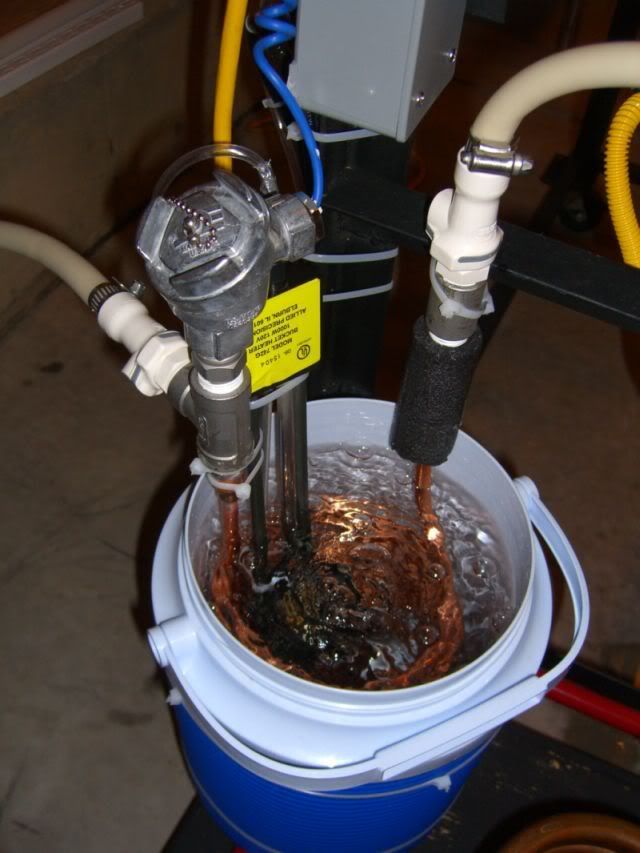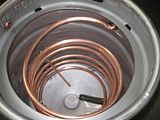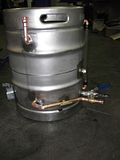HBTers, I think it would be a good idea to put together a list of brainstormed pros and cons related to selecting either a HERMS or a RIMS system. Let's start with brainstorming for a while BEFORE posting any disagreement with previously posted pros and cons. Let the list grow a bit before knocking anything down.
The basic purpose of a HERMS and RIMS is for accurate temp control throughout the mash whether it's for a single rest or low to moderate stepping.
Let's try to ignore pros and cons to recirculation in general and talk about the contrast between the two methods. In other words, both help with wort clarity due to the long "vorlauf". No need to list that.
To normalize on what we're talking about assume these basic definitions:
HERMS - Thin mash is circulated through a coil immersed in the HLT and returned to the top of the mash. The HLT is filled with future sparge water held at a temperature that will impart desired heat into the mash wort. This is often controlled by monitoring the coil's output temp and applying heat to the HLT water as necessary.
RIMS - Thin mash is circulated through a tube in which an electrical heating element is installed and then returned to the top of the mash. Temp is controlled by monitoring the tube output and regulating the heating element based on that temp.
I'll start:
HERMS
Pro:
Guaranteed gently heating of mash.
Coil may be integrated as a chilling path later.
Compact, stays within vessel.
Can be employed with manual control (turn HLT heat on).
Con:
Benefits from (if not requires) HLT water agitation/stirring (can use second pump for this).
Requires sparge water to be heated earlier in the process (heat efficiency loss)
RIMS
pro:
Can be made portable.
Can be employed immediately without heating sparge water first.
con:
Can scorch wort if oversized element or poorly controlled.
Discuss, I'll update this list ongoing.
The basic purpose of a HERMS and RIMS is for accurate temp control throughout the mash whether it's for a single rest or low to moderate stepping.
Let's try to ignore pros and cons to recirculation in general and talk about the contrast between the two methods. In other words, both help with wort clarity due to the long "vorlauf". No need to list that.
To normalize on what we're talking about assume these basic definitions:
HERMS - Thin mash is circulated through a coil immersed in the HLT and returned to the top of the mash. The HLT is filled with future sparge water held at a temperature that will impart desired heat into the mash wort. This is often controlled by monitoring the coil's output temp and applying heat to the HLT water as necessary.
RIMS - Thin mash is circulated through a tube in which an electrical heating element is installed and then returned to the top of the mash. Temp is controlled by monitoring the tube output and regulating the heating element based on that temp.
I'll start:
HERMS
Pro:
Guaranteed gently heating of mash.
Coil may be integrated as a chilling path later.
Compact, stays within vessel.
Can be employed with manual control (turn HLT heat on).
Con:
Benefits from (if not requires) HLT water agitation/stirring (can use second pump for this).
Requires sparge water to be heated earlier in the process (heat efficiency loss)
RIMS
pro:
Can be made portable.
Can be employed immediately without heating sparge water first.
con:
Can scorch wort if oversized element or poorly controlled.
Discuss, I'll update this list ongoing.


